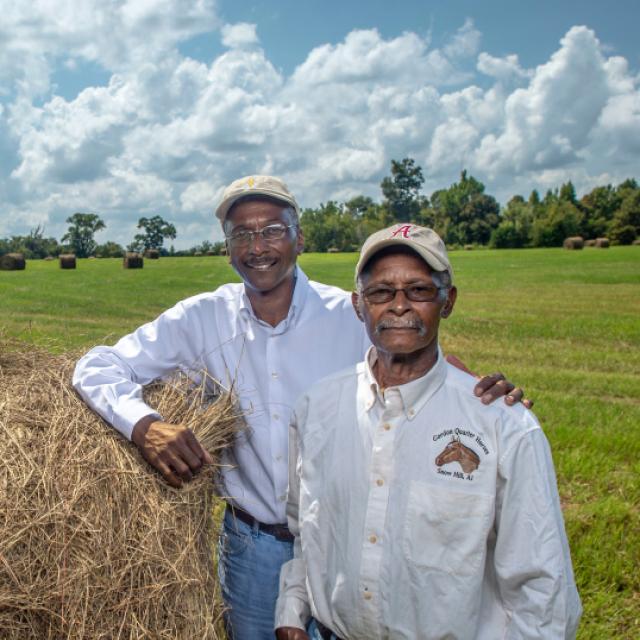NRCS provides technical and financial assistance directly to private landowners and Indian tribes to restore, protect, and enhance wetlands through the purchase of a wetland reserve easement.
Wetland Reserve Easements
NRCS also provides technical and financial assistance directly to private landowners to restore, protect, and enhance wetlands through the purchase of a wetland reserve easement.
Through the wetland reserve enrollment options, NRCS may enroll eligible land through:
Permanent Easements – Permanent Easements are conservation easements in perpetuity. NRCS pays 100 percent of the easement value for the purchase of the easement. Additionally, NRCS pays between 75 to 100 percent of the restoration costs.
30-year Easements – 30-year easements expire after 30 years. Under 30-year easements, NRCS pays 50 to 75 percent of the easement value for the purchase of the easement. Additionally, NRCS pays between 50 to 75 percent of the restoration costs.
For wetland reserve easements, NRCS pays all costs associated with recording the easement in the local land records office, including recording fees, charges for abstracts, survey and appraisal fees, and title insurance.
Eligibility
Land eligible for wetland reserve easements includes farmed or converted wetland that can be successfully and cost-effectively restored. NRCS will prioritize applications based the easement’s potential for protecting and enhancing habitat for migratory birds and other wildlife.
To enroll land through wetland reserve easements, NRCS enters into purchase agreements with eligible private landowners or Indian tribes that include the right for NRCS to develop and implement a wetland reserve restoration easement plan. This plan restores, protects, and enhances the wetland’s functions and values.
How to Apply
To enroll land through wetland reserve easements, landowners may apply at any time at the local USDA Service Center.
Geographic Area Rate Cap (GARC)
The GARC appraisal percentage value and not to exceed (NTE) value statewide are:
- For all areas a 95% GARC will be applied to the individual appraisal with the no-to-exceed (NTE) rate of $5,000.00 per acre.
Application Information
- NRCS WV FY25 ACEP Implementation Guidance with Attachments_STC
- Reserved
- NRCS-CPA-1200 Conservation Program Application
- NRCS-CPA-1200C Continuation Conservation Program Application Continuation Page
- AD-1026 Highly Erodible Land Conservation (HELC) and Wetland Conservation (WC) Certification (Submit to FSA)
- CCC-941 Average Adjusted Gross Income (AGI) Certification and Consent to Disclosure of Tax Information (Submit to FSA)
- CCC-901 Member’s Information (Submit to FSA, if necessary)
- CCC-902E Farm Operating Plan for an Entity (Submit to FSA, if necessary)
- CCC-902E Continuation Sheet for Farm Operating Plan for an Entity (Submit to FSA, if necessary)
- CCC-902I Farm Operating Plan for an Individual (Submit to FSA, if necessary)
- CCC-902I Short Form Farm Operating Plan for an Individual (Submit to FSA, if necessary)
- NRCS-LTP-30 Warranty Easement Deed in Perpetuity
- NRCS-LTP-32 Warranty Easement Deed for a Period of 30 Years
- AD-1158 Subordination Agreement and Limited Lien Waiver
- NRCS-LTP-31 Agreement for the Purchase of Conservation Easement
- NRCS-LTP-40 Agreement to Enter Contract for 30-Year Land Use
- SF-1199A Direct Deposit Sign-Up Form
- CCC-505 Voluntary Permanent Base Acreage Reduction
Darcy Delligatti, State Easement Specialist or NRCS.WVEasements@usda.gov
Information
WRE Ranking
West Virginia's ACEP WRE Ranking Criteria has been vetted over the years by some of the top agricultural leaders within the state to include Farmers, Professors and Professionals. It is reviewed annually to ensure everything is current and objective.
Ready to get started?
Contact your local service center to start your application.
How to Get Assistance
Do you farm or ranch and want to make improvements to the land that you own or lease?
Natural Resources Conservation Service offers technical and financial assistance to help farmers, ranchers and forest landowners.

To get started with NRCS, we recommend you stop by your local NRCS field office. We’ll discuss your vision for your land.
NRCS provides landowners with free technical assistance, or advice, for their land. Common technical assistance includes: resource assessment, practice design and resource monitoring. Your conservation planner will help you determine if financial assistance is right for you.
We’ll walk you through the application process. To get started on applying for financial assistance, we’ll work with you:
- To fill out an AD 1026, which ensures a conservation plan is in place before lands with highly erodible soils are farmed. It also ensures that identified wetland areas are protected.
- To meet other eligibility certifications.
Once complete, we’ll work with you on the application, or CPA 1200.
Applications for most programs are accepted on a continuous basis, but they’re considered for funding in different ranking periods. Be sure to ask your local NRCS district conservationist about the deadline for the ranking period to ensure you turn in your application in time.
As part of the application process, we’ll check to see if you are eligible. To do this, you’ll need to bring:
- An official tax ID (Social Security number or an employer ID)
- A property deed or lease agreement to show you have control of the property; and
- A farm number.
If you don’t have a farm number, you can get one from USDA’s Farm Service Agency. Typically, the local FSA office is located in the same building as the local NRCS office. You only need a farm number if you’re interested in financial assistance.
NRCS will take a look at the applications and rank them according to local resource concerns, the amount of conservation benefits the work will provide and the needs of applicants. View Application Ranking Dates by State.
If you’re selected, you can choose whether to sign the contract for the work to be done.
Once you sign the contract, you’ll be provided standards and specifications for completing the practice or practices, and then you will have a specified amount of time to implement. Once the work is implemented and inspected, you’ll be paid the rate of compensation for the work if it meets NRCS standards and specifications.

